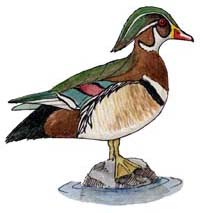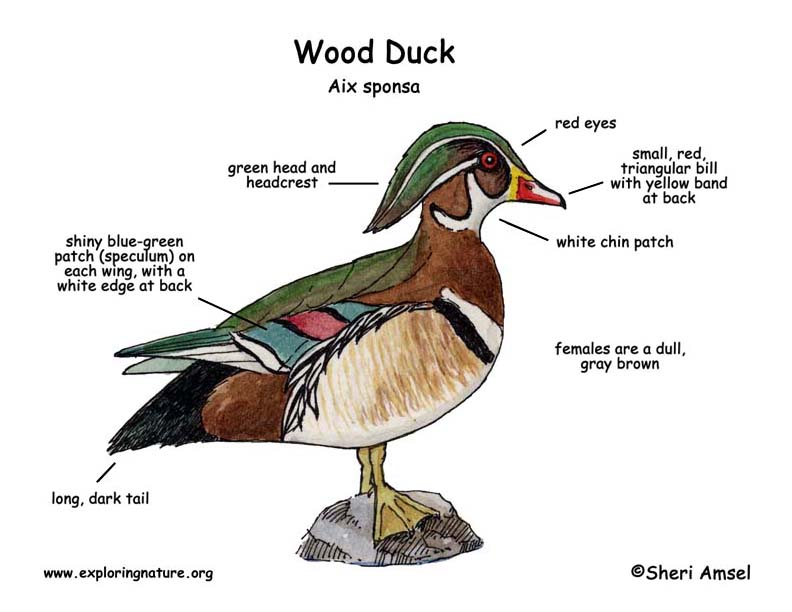

They breed in southern Canada, through the eastern U.S., south to Cuba and in the West from British Columbia south along Pacific Coast to southern California. In the winter they live in the southern part of their range.
They live along wooded rivers, marshes, ponds and swamps.
They are a many-colored duck with a small, red, triangle-shaped bill. Thay have a head crest, white chin patch, and a long tail. They have a shiny blue-green patch (speculum) on each wing, with a white edge. The females are a dull, gray brown.
They will nest in tree holes and man-made nesting boxes.
They eat plants, seeds, fruits and some insects.
They nest in tree holes or nest boxes lined with down from the female's breast. She lays 6 - 15 (sometimes as many as 40!) cream colored eggs.
Kingdom: Animalia
Phylum: Chordata
Subphylum: Vertebrata
Class: Aves
Order: Anseriformes
Family: Anatidae
Genus: Aix
Species: A. sponsa
When you research information you must cite the reference. Citing for websites is different from citing from books, magazines and periodicals. The style of citing shown here is from the MLA Style Citations (Modern Language Association).
When citing a WEBSITE the general format is as follows.
Author Last Name, First Name(s). "Title: Subtitle of Part of Web Page, if appropriate." Title: Subtitle: Section of Page if appropriate. Sponsoring/Publishing Agency, If Given. Additional significant descriptive information. Date of Electronic Publication or other Date, such as Last Updated. Day Month Year of access < URL >.
Amsel, Sheri. "Duck (Wood)" Exploring Nature Educational Resource ©2005-2024. December 13, 2024
< http://www.exploringnature.org/db/view/Duck-Wood >

